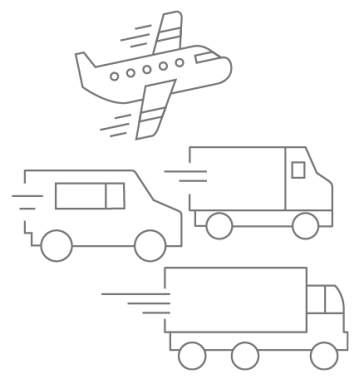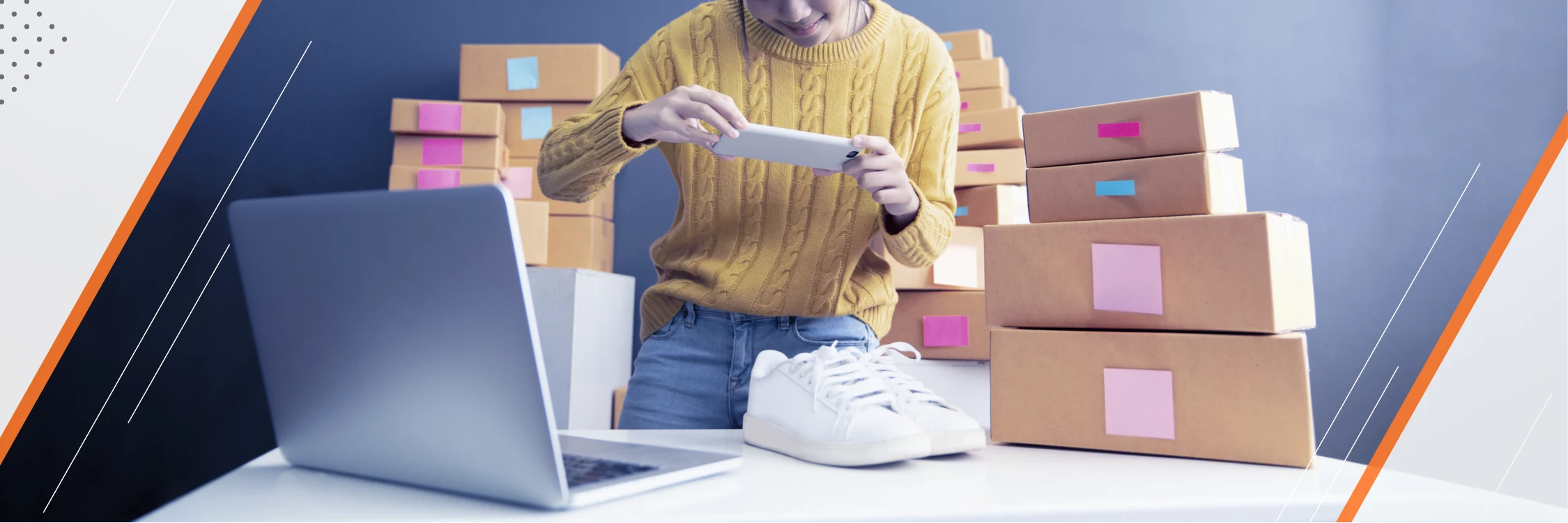Get Your Ship Together for the Holidays
Contents

It’s that time of year—thank goodness, holiday sales are starting to roll in. But processing those orders is just part of the challenge of getting the products out the door and safely into the hands of customers. Fortunately we’re besties with the folks at UPS who have clued us in on some tips and tricks. For starters, Kyle Blakey, Packaging Engineering Supervisor for UPS Customer Solutions, recommends considering the item’s materials, size, shape, fragility, and ability to handle impact. Also keep in mind that your package may go in planes, trains, (trucks, ships), and automobiles, and is likely to be handled by dozens of people. It will likely be subjected to shock, vibration, compression, impact, temperature variation, and changes in orientation. These variables mean that you need to pick the proper packaging in order to get your products to their destination, in the shape they were intended. Fortunately Kyle has suggested key elements to consider when setting up your holiday shipping.
The Box
Cardboard has two main components: The smooth outside of the box is called liner board (or facings). The medium (or flutes) makes up is the wavy material sandwiched on the inside of the cardboard. The facings surround the flutes to make a strong, sturdy material that’s folded up into the humble cardboard box. But not all cardboard is created equal. It actually goes through rigorous testing to gauge you how strong it is. To see your box strength, size, and weight limits, check out the box’s ratings.r]
Inside the Box
Foams – Block and Brace
The benefits of block and brace foams? They cushion through multiple impacts and can be customized or molded to meet the needs of your products. Because the die cut and foam can be expensive, only use these for fragile, high-cost items.
Wrapping
You know, bubble wrap and plastic wrap and all their cousins? They’re flexible, moldable, and far less expensive than foams, but the don’t always perform as well as blocking and at the end of they day, they’re really not a robust cushioning system. Use wrapping for light, semi-rigid items and for protecting surfaces inside your box.
Loose Fill
While the wonderful world of packing peanuts and the like is great for playful cats, it does have its downside. Yes, it’s a less expensive packaging option and it does contain product when used properly, but it also falls short as a cushioning system and it’s messy as all get out. Yes, messiness and organization matters when your fulfillment department is running on full speed. Use loose fill for rigid products and, for goodness sake, only for items under 20 pounds.
Paper Dunnage
Papercuts be damned, there are some short and long term benefits to using paper filler in your boxes. It’s low cost, doesn’t take up tons of room, and it’s environmentally friendly. But depending on the action the box sees, paper can not guarantee consistent protection because it can crush. Also, working with it can be labor intensive and a learned skill, so be sure to find some work gloves to protect the hands. To make paper work for you, don’t use it for fragile items, in fact, use it for items under 10 pounds.
Inflatables
Inflatable packaging is good for containing products but it can be affected by temperature and pressure, so be mindful of where your package is headed and whether or not it will be flying there. Split seams could lead to a damaged product. Use inflatable packaging in full-on fulfillment operations and only for packages under 20 pounds.
Consider Testing
Having your packaging tested by a pro can be an enormous help to all e-commerce operations big and small. It allows you to simulate real-life conditions in a controlled laboratory where the tests are repeatable, consistent, and controlled. Typically you’ll find the root cause of a packaging problem and by reducing breakages and returns, you’ll be rewarded with happy customers. Consider yourself warned: Self-testing can be a fatal mistake because it’s not scientific or controlled, and may not accurately replicate real-world conditions. Here are the other options:
-
- Use an independent, professional testing lab when you want to reduce packaging costs, are having packaging problems, or are introducing a new product. They test to industry-accepted standards and offer unbiased recommendations.
-
- Independent packaging consultants can help find root cause of issues and also offer unbiased recommendations.
- Packaging suppliers typically will only find solutions and pricing that is available with their packaging material and services.
Remember, the smarted business leaders are the ones who know what they don’t know. Find an expert to guide to toward the right choices for your products and business so you can enjoy the higher holiday revenue and know your customers will be happy.
To learn more about the shipping solutions and package testing lab at UPS, visit UPS Connect.
—The Webgility Marketing Team
@UPS #packaging experts show how to get your #Ship together for the #holidays. #shipping #ecommerce Click To TweetPriya Venkat is an experienced CX leader at Webgility, having expertise in driving business growth and customer success. With her analytical thinking and relationship-building skills, she helps ecommerce businesses thrive.



.png?width=56&height=56&name=image%20(4).png) Priya Venkat
Priya Venkat




